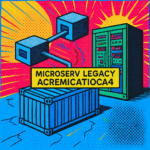Blockchain technology, while revolutionary, faces a significant hurdle: transaction speeds. The inherent limitations of traditional blockchain architectures, particularly in handling a high volume of transactions, often lead to congestion and slow processing times. This can severely impact the usability and scalability of blockchain applications. This article explores a promising solution to this challenge: sharding. We will delve into the intricacies of sharding, examining how it works, its benefits, potential drawbacks, and its overall impact on improving blockchain transaction speeds. We’ll also discuss various sharding implementations and their effectiveness in achieving greater throughput and efficiency within the blockchain ecosystem. Ultimately, understanding sharding is crucial for grasping the future of blockchain scalability and its potential to become a truly mainstream technology.
Understanding Sharding: Dividing the workload
Sharding is a database partitioning technique that horizontally divides a large dataset across multiple smaller databases, called shards. In the context of blockchain, each shard essentially represents a subset of the entire blockchain network. Instead of every node processing every transaction, nodes only participate in the validation and processing of transactions within their assigned shard. This distributed processing significantly reduces the workload on individual nodes, leading to faster transaction times and improved overall network performance. Think of it as splitting a large, unwieldy project among multiple teams, allowing each team to focus on a specific part, ultimately completing the project much faster than if a single team handled everything. This parallel processing is the core principle behind sharding’s effectiveness.
Benefits of Sharding for Blockchain Speed
The advantages of implementing sharding in blockchain networks are considerable. First and foremost, it dramatically increases transaction throughput. By distributing the workload, the network can handle a far greater number of transactions per second compared to a non-sharded architecture. Secondly, sharding improves scalability. As the network grows and more transactions are processed, the system can easily accommodate the increased load by adding more shards. This contrasts with traditional blockchains which struggle to handle significant increases in transaction volume. Finally, sharding can also reduce latency, meaning transactions are confirmed much more quickly. This is critical for real-time applications that require immediate processing.
Challenges and Considerations in Sharding Implementation
While sharding offers numerous benefits, it’s not without its challenges. One significant hurdle is maintaining data consistency across all shards. Ensuring that all shards have a consistent view of the blockchain is vital to prevent discrepancies and maintain the integrity of the system. Another challenge is cross-shard communication. Transactions may involve data from multiple shards, requiring efficient communication mechanisms to coordinate the process. Finally, the complexity of sharding implementation requires careful design and development to avoid introducing vulnerabilities or performance bottlenecks. Careful consideration must be given to these complexities to successfully leverage the advantages of sharding.
Different Sharding Approaches and their Effectiveness
Various sharding approaches exist, each with its own strengths and weaknesses. Some systems employ a random sharding mechanism, randomly assigning transactions to different shards. Others use hashed sharding, determining shard assignment based on a cryptographic hash of the transaction data. A third method, range sharding, assigns ranges of data to specific shards. The choice of sharding method depends heavily on the specific requirements of the blockchain network. The following table highlights some key differences:
| Sharding Method | Advantages | Disadvantages |
|---|---|---|
| Random Sharding | Simple implementation, even distribution of load | Potential for uneven distribution over time, less efficient for data retrieval |
| Hashed Sharding | Predictable shard assignment, efficient data retrieval | Potential for hotspots if hash function isn’t carefully chosen |
| Range Sharding | Efficient for sequential data, easy data retrieval | Uneven load distribution if data is not evenly distributed |
Conclusion: Sharding as a pathway to faster blockchains
Sharding presents a powerful solution to the scalability challenges facing blockchain technology. By horizontally partitioning the blockchain into smaller, more manageable shards, sharding significantly increases transaction throughput, improves scalability, and reduces latency. However, it’s crucial to acknowledge the complexities involved in sharding implementation, particularly in maintaining data consistency and managing cross-shard communication. Different sharding approaches offer various trade-offs, and choosing the most appropriate method depends on the specific needs of the blockchain network. Ultimately, as blockchain technology continues to mature, sharding will likely play a critical role in unlocking its full potential and enabling its widespread adoption across various industries and applications. The careful design and implementation of sharding techniques will be key to realizing a more efficient, faster, and scalable blockchain ecosystem.
References
Ethereum Sharding Documentation
A Survey on Blockchain Scalability Challenges and Sharding Solutions
Ethereum Sharding is Finally Here
Image By: Black Forest Labs






